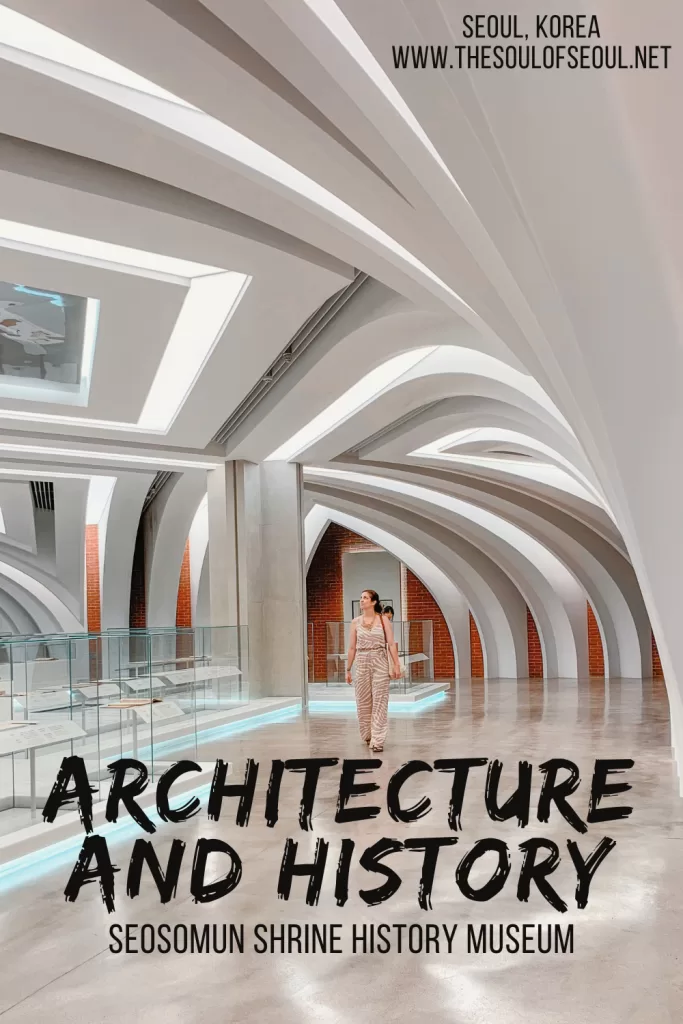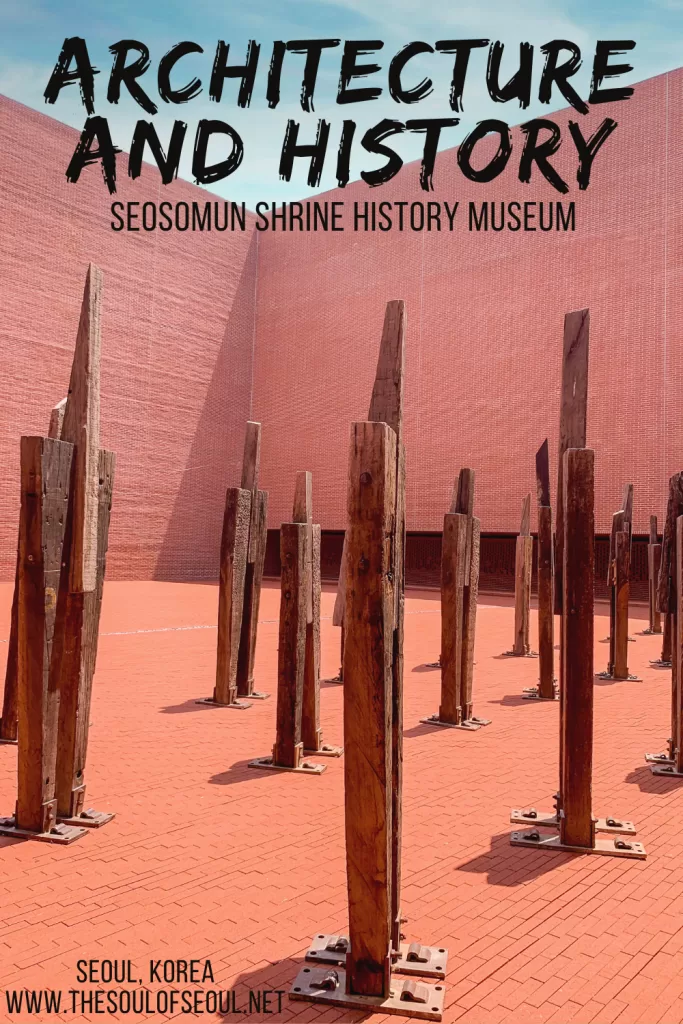Exploring Seoul’s Seosomun Shrine: Where Architecture Meets Martyrdom
Last Updated on January 25, 2025
The first time I visited the Seosomun Shrine History Museum (서소문성지 역사박물관), I went for the architecture. I had seen photos and had no real idea what history this museum in Seoul would be detailing, but every museum I find in Korea has something fascinating to teach. While I initially visited for its modern design, I left with a newfound understanding of Korea’s Catholic martyrs and their resilience.”
Seomun Gate is a sacred place for Korean Catholics. It was here that countless Catholics were executed after standing up against Joseon’s class-based society and declaring that all humans were equal under God. After the death of King Jeongjo in 1800, Catholics were seen as a threat to New-Confucian social order and thus began their persecution.
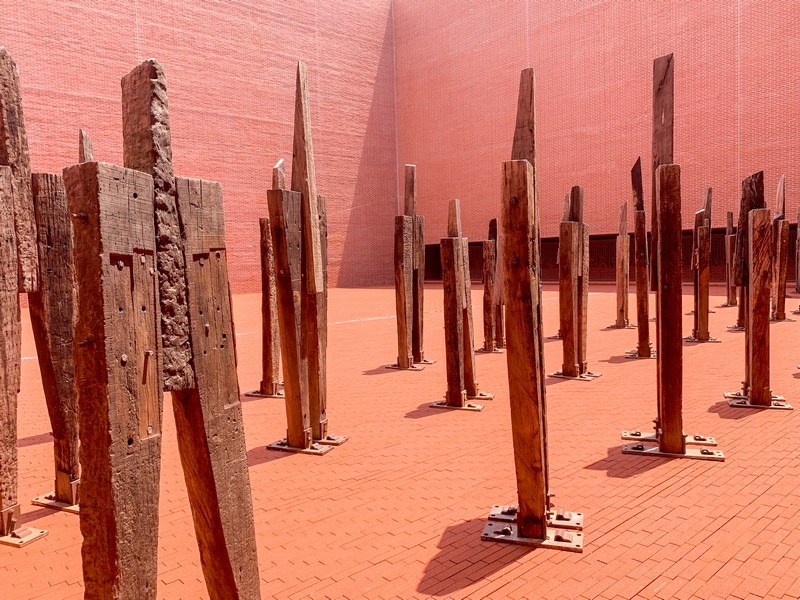
The Seosomun Shrine History Museum offers an interesting architectural experience and a deep dive into Catholic history in Korea:
(This post contains affiliate links, which means I receive a certain percentage of a sale if you purchase after clicking at no cost to you. Thank you for your support.)
Basic Info
Address: 5 Chilpae-ro, Jung-gu, Seoul (서울특별시 중구 칠패로 5 (의주로2가))
How To Get There: Chungjeongno Subway Station on line 2, exit 4. Walk straight and you’ll find the park a block down on the right.
Hours: Tuesday, Thursday – Sunday: 9:30am ~ 5:30pm; Wednesday: 9:30am ~ 8:30pm; CLOSED MONDAYS
Admission: Free
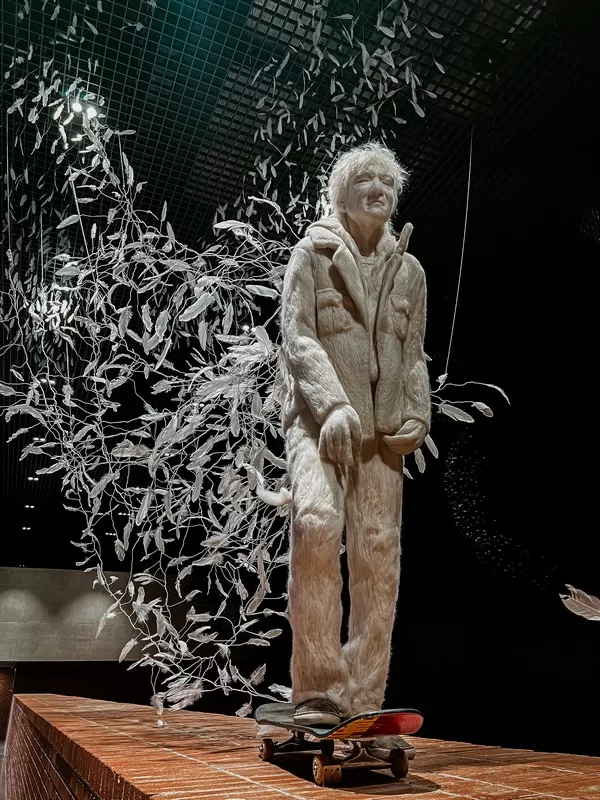
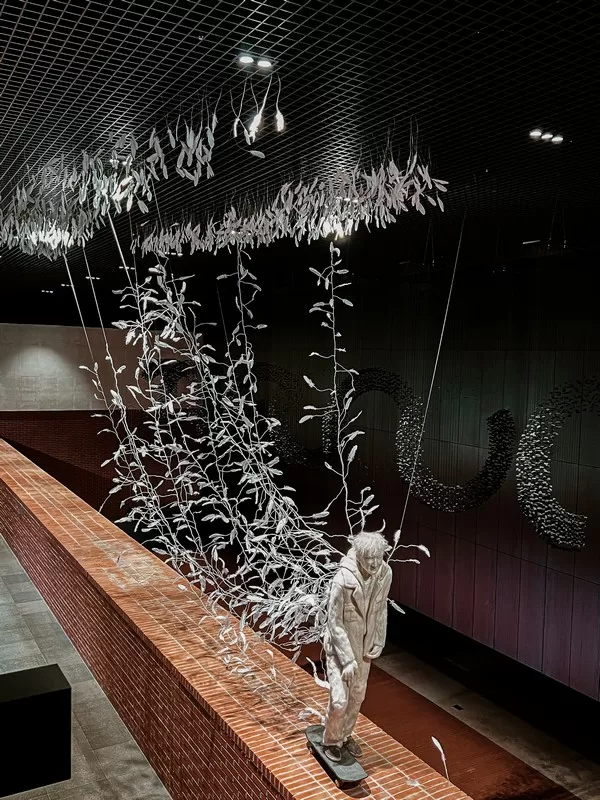
The Architectural Highlights & Spaces
This museum isn’t a common spot for tourists to visit, but is situated quite close to Culture Station Seoul and Seoullo7017, and could be an easy addition to a Seoul itinerary. Here’s how to explore the museum and what to expect when you visit.
To enter, you walk down a corridor from the park that surrounds the space to find doors that lead into the first floor, which is actually beneath ground. After entering and walking past a small shop and information desk, you’ll be able to look over a wall to see down into where the changing art exhibitions are held. Don’t head down the stairs just yet though.
Instead, walk down the corridor to the right that first leads to the Seong Jeong Hasang Memorial Hall. This quiet space was built to commemorate the martyrs Jeong Hasang and his family who were executed at Seosomun.
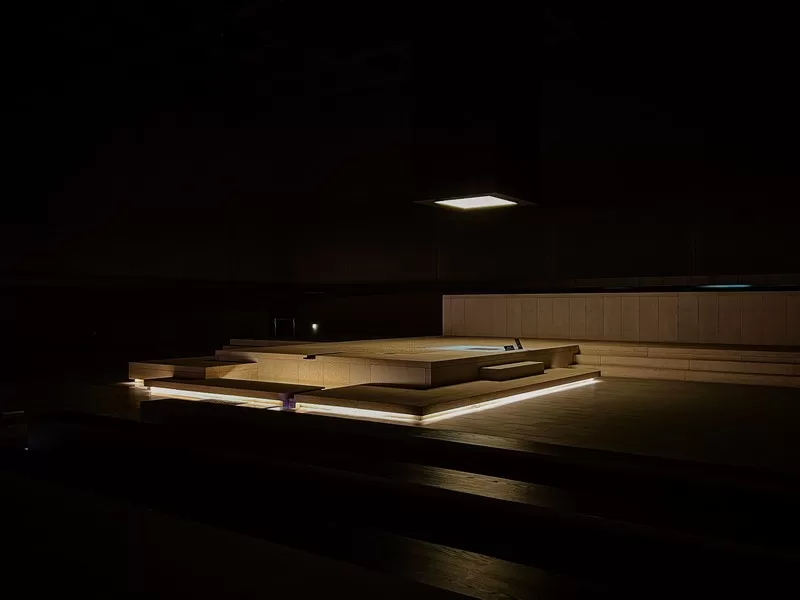
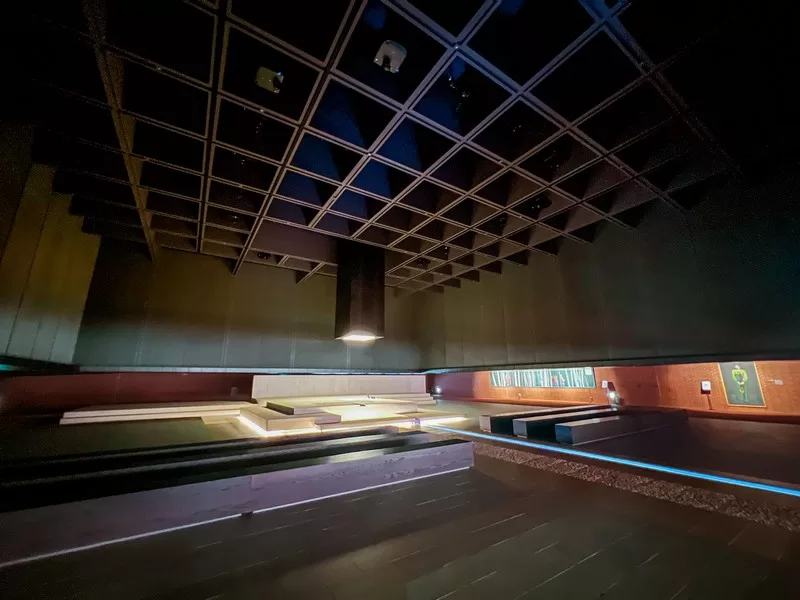
The Consolation Hall
From there, head down further into the darkness. The next space is the consolation hall, a place for comfort. It’s dark, calming, and you can sit anywhere. Take a deep breath and be surrounded in the space illuminated by just a tiny bit of light. In this space, there are also media panels that have been installed around the inner square and various art is displayed throughout the day.
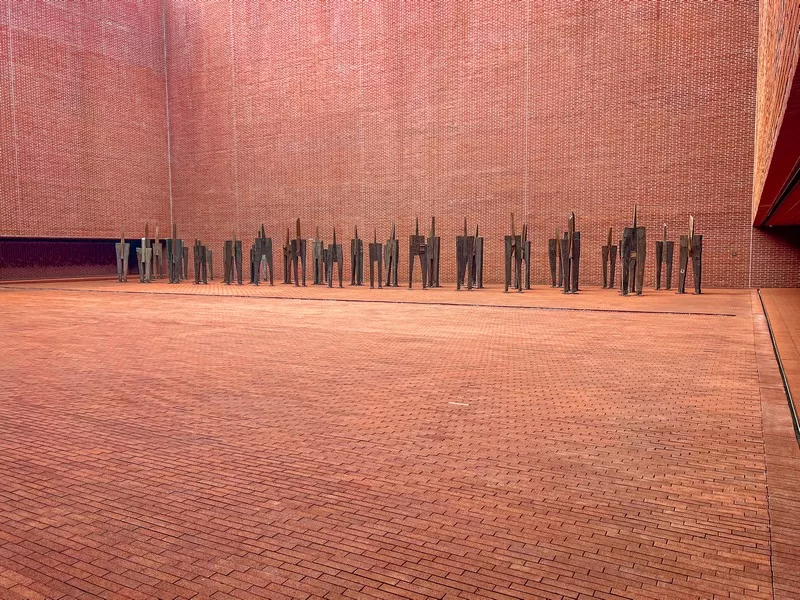
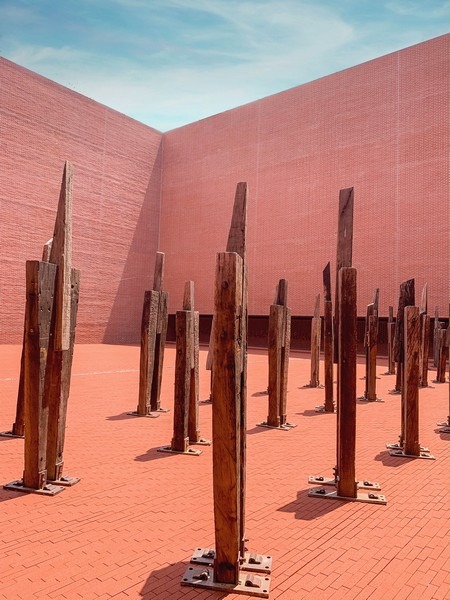
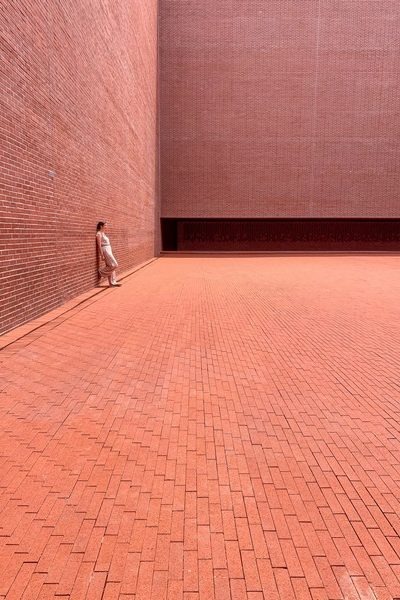
Sky Square
One wall of the Consolation Hall is all windows which allow you to peer out into the Sky Square. Find the door that opens to walk out into the open air. This space is rather stunning in design. At this point you’re 3 floors down in the ground, the basement, the walls tower and all you can see is the sky above. This is one of my favorite architectural wonders in Seoul that most people miss.
On one side of the square is “People Standing” by Jeong Hyeon. This artwork depicts 44 people who were persecuted for their religion and were martyred and became saints.
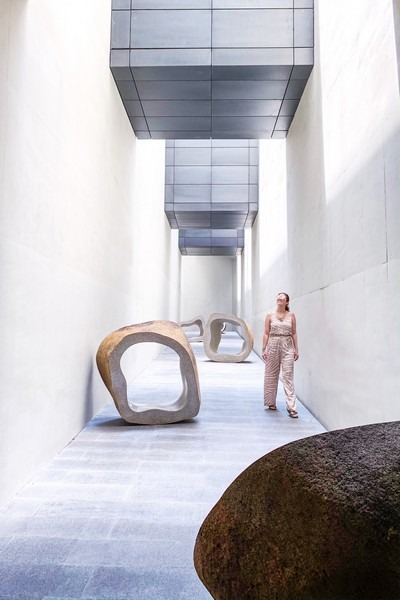
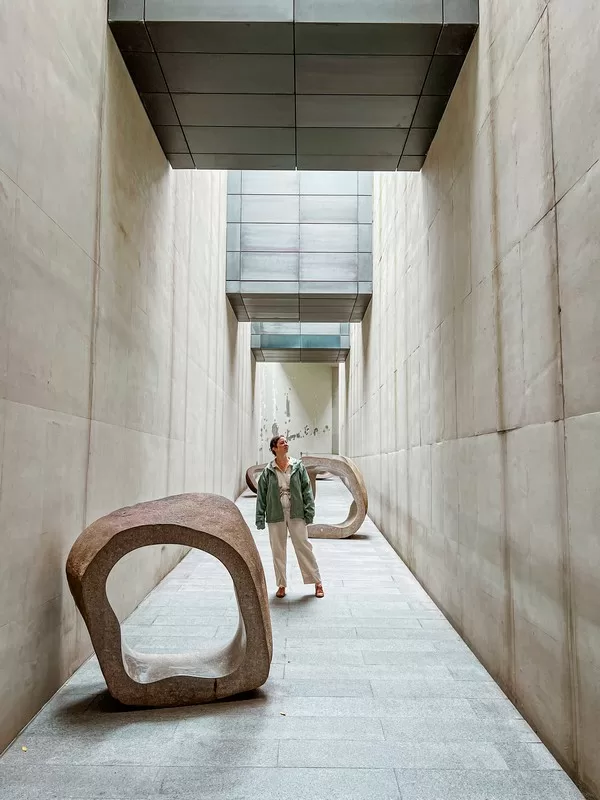
Sky Road A and Sky Road B
From the Sky Square, there’s a small door which leads to a hall where media art plays on the walls. It looks dark and you may just peak in thinking that’s all there is to see, but you should walk to the end to find a white hall with stone art to the right. It’s a secret corner of the museum that you need to know about to find.
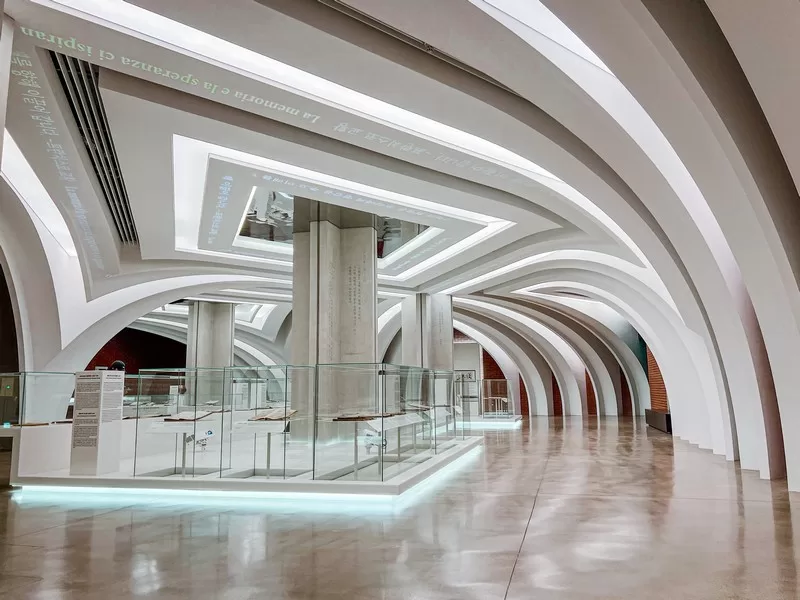
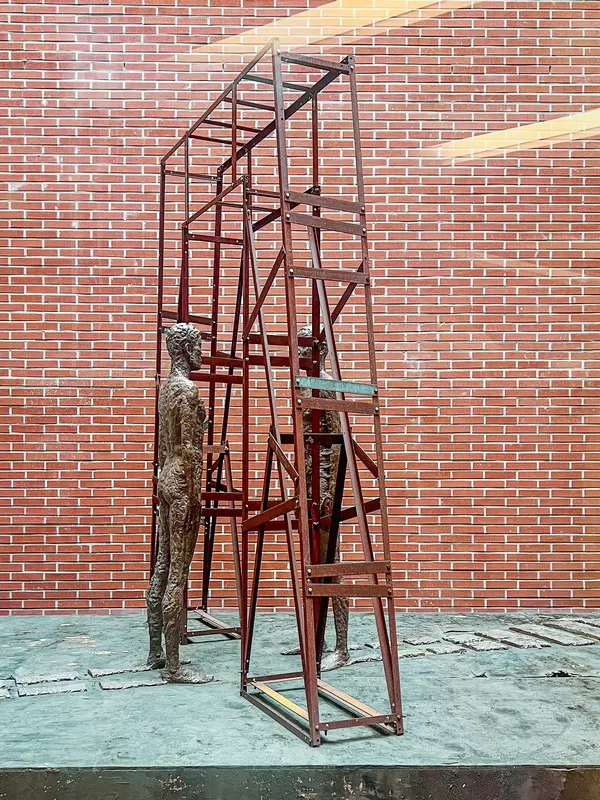
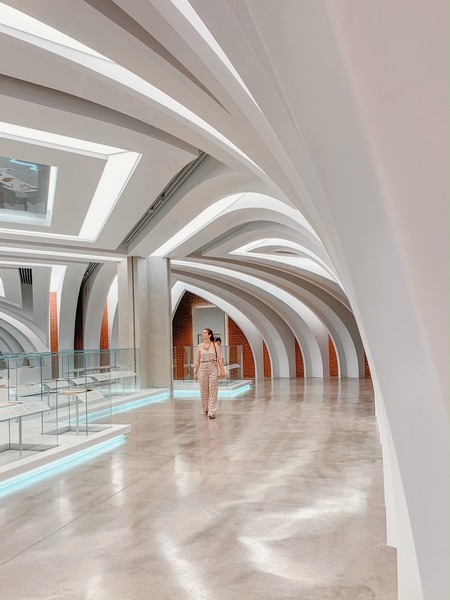
Permanent Exhibition
Back inside, turn the corner to find the space that will teach you all about Catholics in Korean history and why this place is sacred to them. Look through the relics, take in the massive najeonchilgi artwork, and read the information that details a part of history that few likely know about.
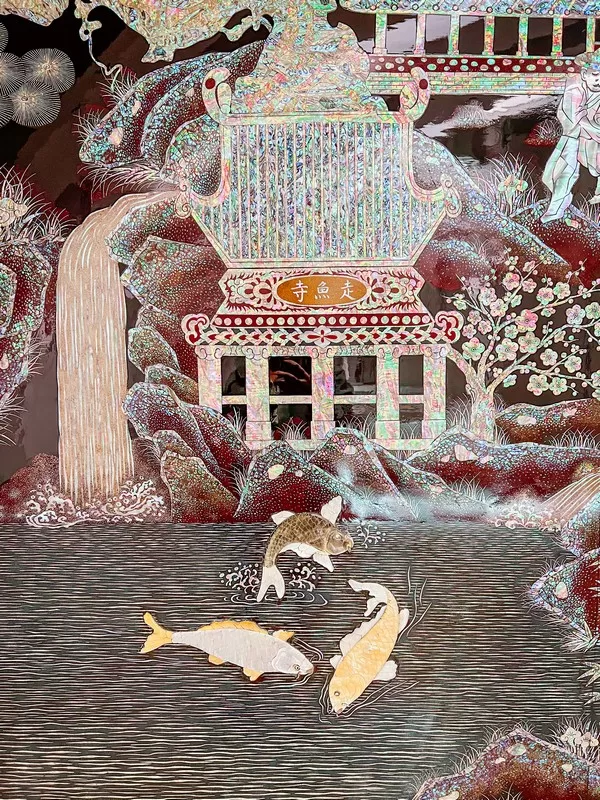
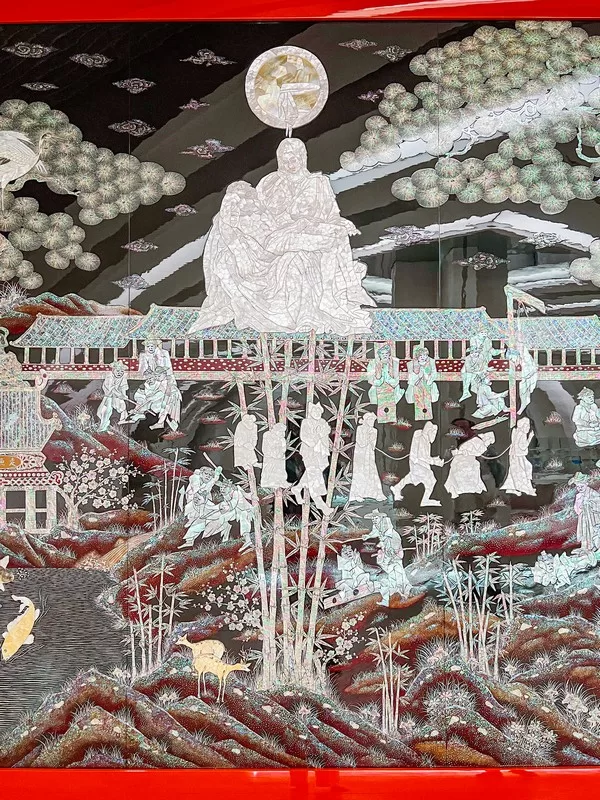
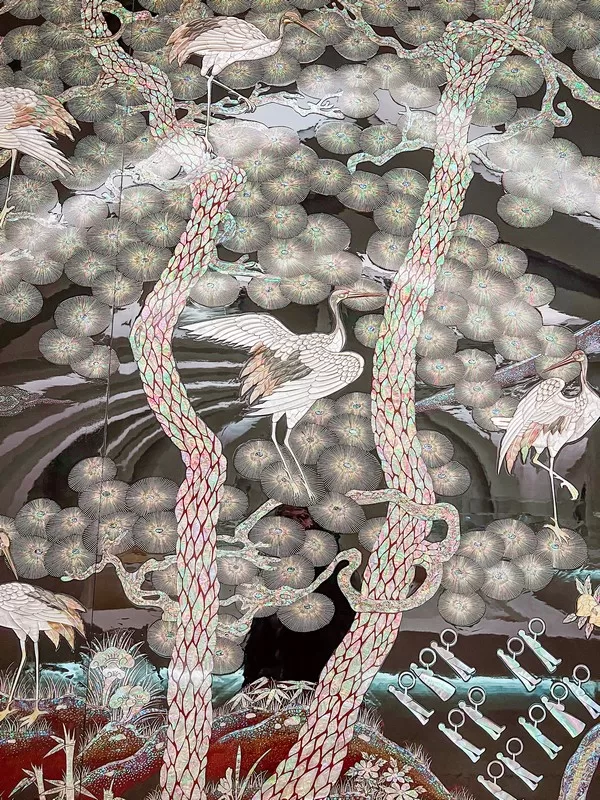
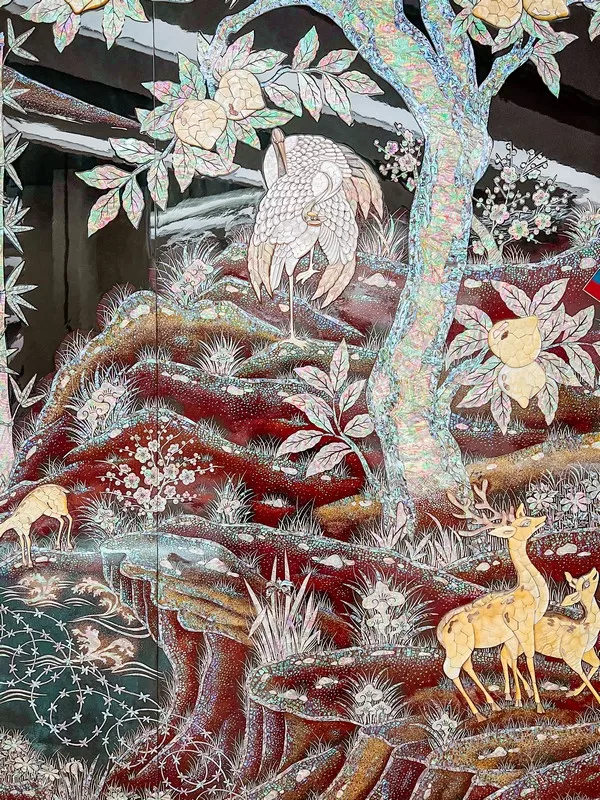
Rise, Illuminare! Surge, Illuminare is a large piece of najeonchilgi, or mother-of-pearl lacquerware done by Kim Kyung-ja, Kim Ui-yong, Kang Jeong-jo, and Son Dae-hyeon. Produced to commemorate Pope Francis’ visit to Korea in 2014, it depicts the Korean Catholic Church’s determination and renewal to realize the unification of South and North Korea and the restoration of a culture of life.
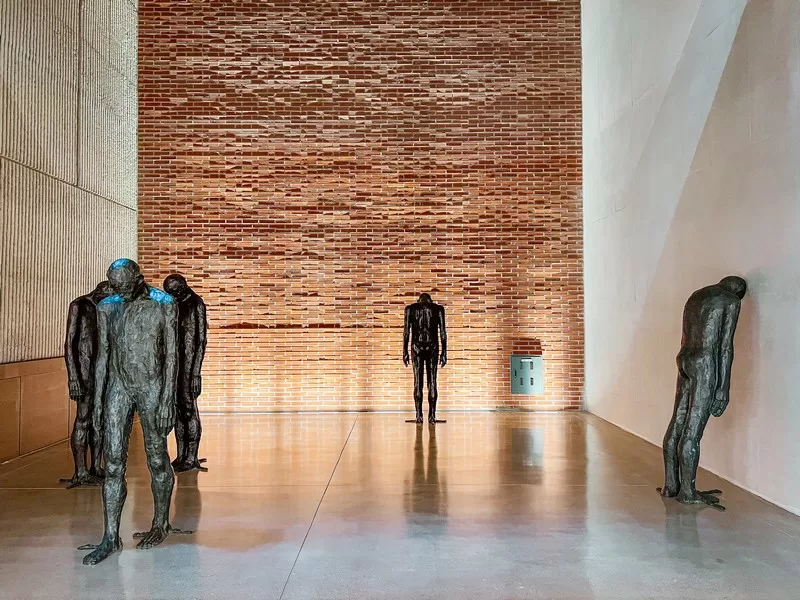
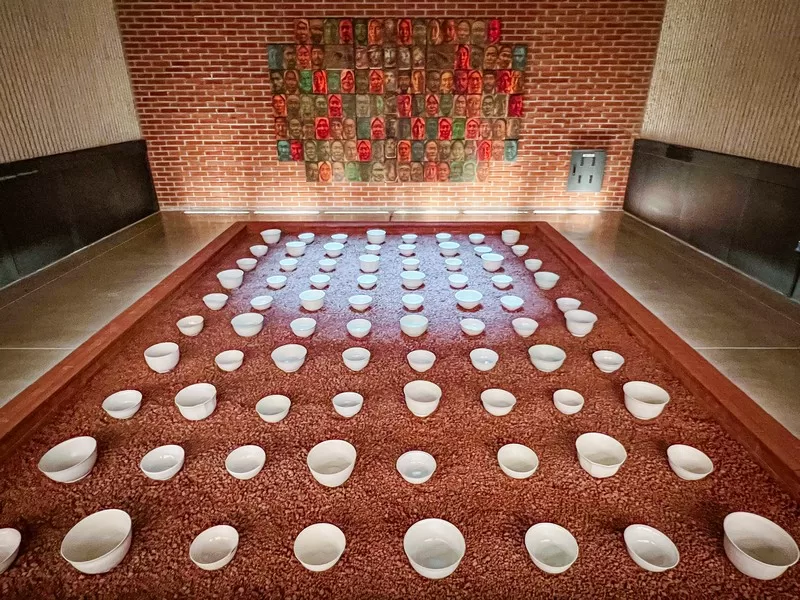
The permanent exhibition space holds both relics and information as well as artistic pieces like “There is a man between the sky and the earth” by Bae Hyeong-gyeong on the left above and “Tomb of the Martyr” by Choi Ji-man on the right.
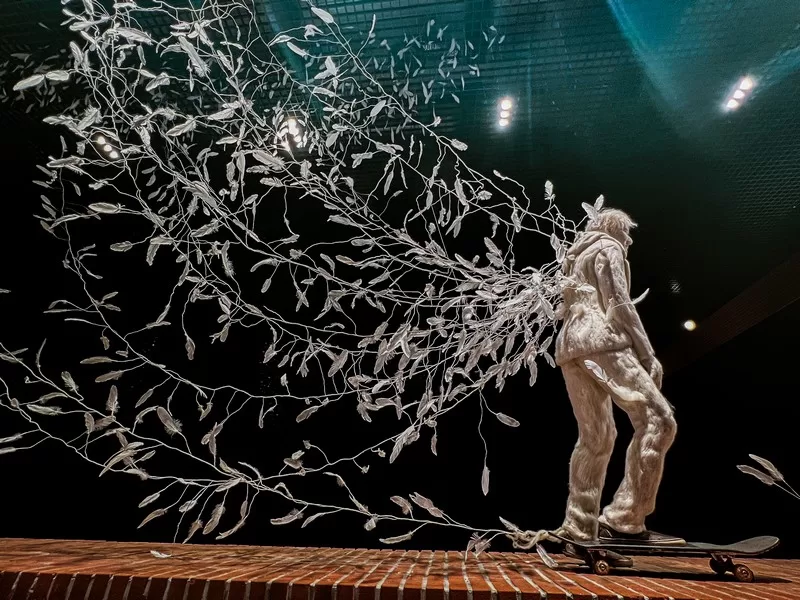
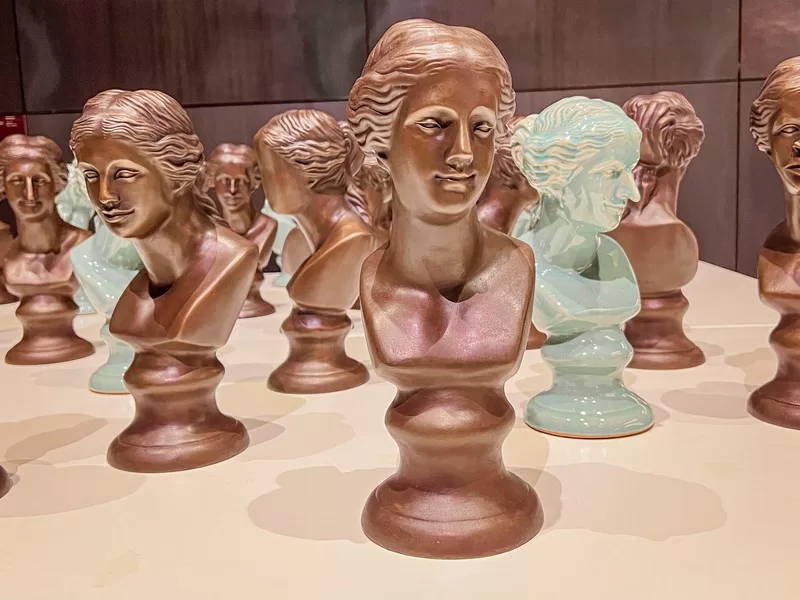
Special Exhibition
After the permanent exhibitions, you head up the stairs and you can find some fantastic special exhibitions. These installations are changed out throughout the year, so check out their website to see what is on view currently. After perusing this section, you’ll go back up once again to find the exit back out into the park.
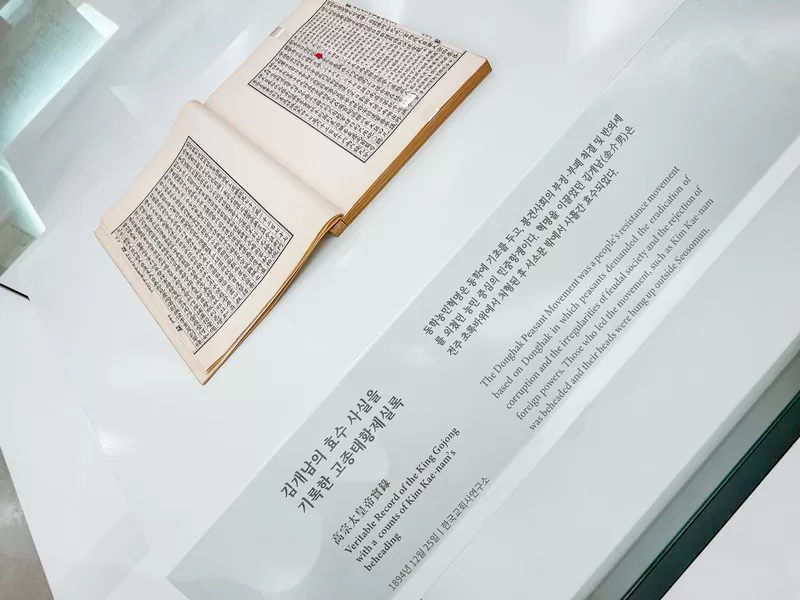
The History of Catholicism in Korea
Before diving into the museum’s design, it’s essential to understand why this site holds profound significance for Korean Catholics. For over a century after the Catholic Church was founded in Korea in 1784, countless Catholics were executed at Seosomun Intersection, where they stood against Joseon’s class-based society, proclaiming equality before God.
Persecution intensified after King Jeongjo’s death, culminating in the Sinyu (1801), Gihae (1839), and Byeongin (1866-1873) persecutions, during which prominent martyrs such as Peter Lee Seung-hun, Paul Jeong Ha-sang, and John the Baptist Nam Jong-sam were killed.
In 1925 and 1968, many of these martyrs were beatified, and in 1984, Pope John Paul II canonized 103 Korean martyrs, including 44 executed at Seosomun. Pope Francis later beatified 123 more in 2014, with 27 of them martyred at the same site. Today, Seosomun Intersection stands as Korea’s largest martyrdom site, where the highest number of saints and blesseds were made in a single location.
Seosomun Shrine History Museum is more than a beautiful structure—it’s a place where faith, resilience, and art intertwine. Whether you’re drawn to its unique underground spaces or eager to learn about Korea’s Catholic history, this museum is a unique space to find in Seoul, Korea.
Did you like this post? Pin IT!
